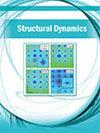In crystallo observation of active site dynamics and transient metal ion binding within DNA polymerases.
IF 2.3
2区 物理与天体物理
Q3 CHEMISTRY, PHYSICAL
引用次数: 0
Abstract
DNA polymerases are the enzymatic catalysts that synthesize DNA during DNA replication and repair. Kinetic studies and x-ray crystallography have uncovered the overall kinetic pathway and led to a two-metal-ion dependent catalytic mechanism. Diffusion-based time-resolved crystallography has permitted the visualization of the catalytic reaction at atomic resolution and made it possible to capture transient events and metal ion binding that have eluded static polymerase structures. This review discusses past static structures and recent time-resolved structures that emphasize the crucial importance of primer alignment and different metal ions binding during catalysis and substrate discrimination.
DNA聚合酶活性位点动力学和瞬态金属离子结合的结晶观察。
DNA聚合酶是在DNA复制和修复过程中合成DNA的酶促催化剂。动力学研究和x射线晶体学揭示了整个动力学途径,并导致了双金属离子依赖的催化机制。基于扩散的时间分辨晶体学允许在原子分辨率上可视化催化反应,并使捕获暂时事件和金属离子结合成为可能,这些事件和金属离子结合逃避了静态聚合酶结构。这篇综述讨论了过去的静态结构和最近的时间分辨结构,强调了在催化和底物识别过程中引物排列和不同金属离子结合的重要性。
本文章由计算机程序翻译,如有差异,请以英文原文为准。
求助全文
约1分钟内获得全文
求助全文
来源期刊

Structural Dynamics-Us
CHEMISTRY, PHYSICALPHYSICS, ATOMIC, MOLECU-PHYSICS, ATOMIC, MOLECULAR & CHEMICAL
CiteScore
5.50
自引率
3.60%
发文量
24
审稿时长
16 weeks
期刊介绍:
Structural Dynamics focuses on the recent developments in experimental and theoretical methods and techniques that allow a visualization of the electronic and geometric structural changes in real time of chemical, biological, and condensed-matter systems. The community of scientists and engineers working on structural dynamics in such diverse systems often use similar instrumentation and methods.
The journal welcomes articles dealing with fundamental problems of electronic and structural dynamics that are tackled by new methods, such as:
Time-resolved X-ray and electron diffraction and scattering,
Coherent diffractive imaging,
Time-resolved X-ray spectroscopies (absorption, emission, resonant inelastic scattering, etc.),
Time-resolved electron energy loss spectroscopy (EELS) and electron microscopy,
Time-resolved photoelectron spectroscopies (UPS, XPS, ARPES, etc.),
Multidimensional spectroscopies in the infrared, the visible and the ultraviolet,
Nonlinear spectroscopies in the VUV, the soft and the hard X-ray domains,
Theory and computational methods and algorithms for the analysis and description of structuraldynamics and their associated experimental signals.
These new methods are enabled by new instrumentation, such as:
X-ray free electron lasers, which provide flux, coherence, and time resolution,
New sources of ultrashort electron pulses,
New sources of ultrashort vacuum ultraviolet (VUV) to hard X-ray pulses, such as high-harmonic generation (HHG) sources or plasma-based sources,
New sources of ultrashort infrared and terahertz (THz) radiation,
New detectors for X-rays and electrons,
New sample handling and delivery schemes,
New computational capabilities.
 求助内容:
求助内容: 应助结果提醒方式:
应助结果提醒方式:


